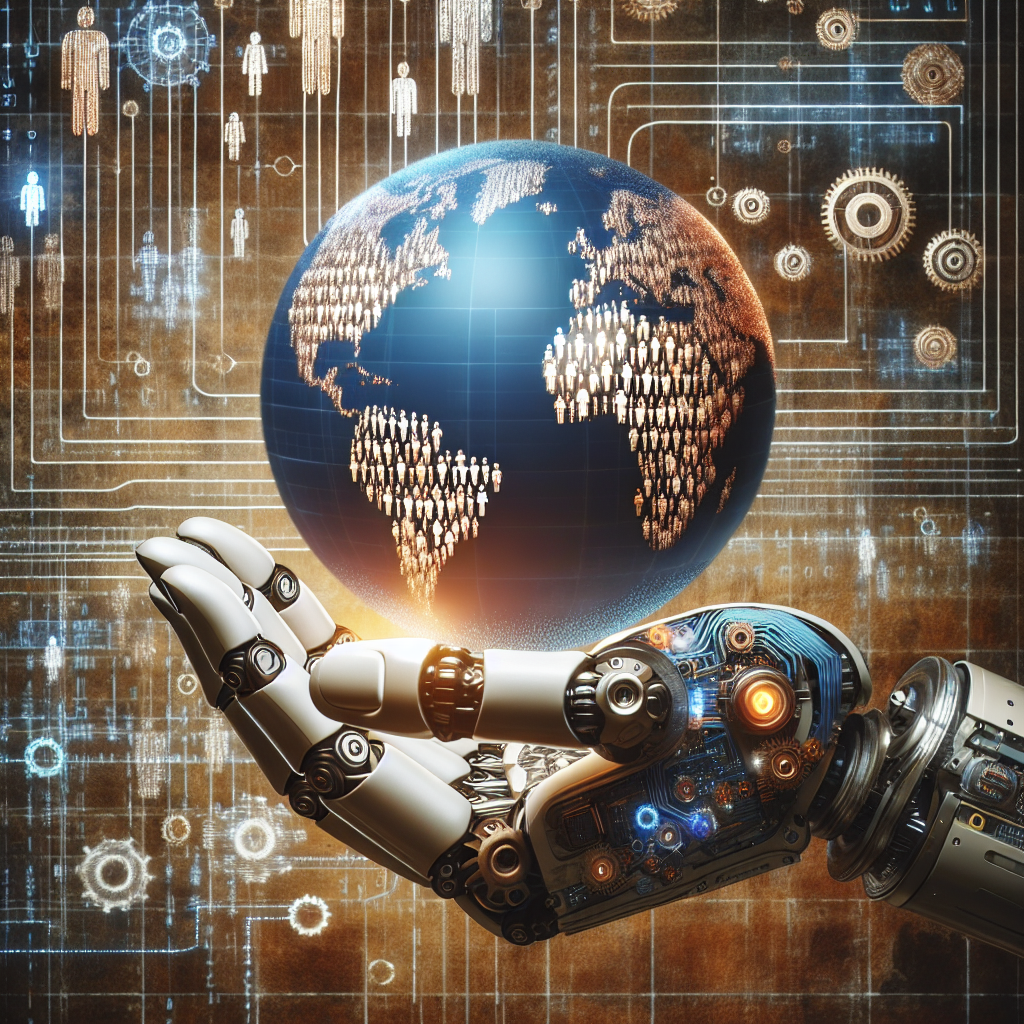The Role of AI Automation in Refugee Rights
The global refugee crisis is one of the most pressing humanitarian issues of our time. With millions of people forced to flee their homes due to conflict, persecution, and natural disasters, the need for effective and efficient solutions to support refugees has never been greater. In recent years, artificial intelligence (AI) automation has emerged as a powerful tool in addressing the challenges faced by refugees and improving their access to essential services and rights.
AI automation refers to the use of artificial intelligence technologies to automate tasks that would otherwise require human intervention. This can range from simple tasks like data entry and processing to more complex processes like decision-making and analysis. In the context of refugee rights, AI automation can play a crucial role in streamlining services, improving efficiency, and ensuring that refugees receive the support and protection they need.
One of the key areas where AI automation has had a significant impact on refugee rights is in the processing of asylum claims. Asylum seekers are often faced with lengthy and complex legal processes when seeking protection in a new country. AI automation can help to streamline this process by analyzing and processing large amounts of data quickly and accurately, helping to identify patterns and trends in asylum claims, and speeding up decision-making processes.
For example, AI-powered tools can be used to analyze and process asylum applications, identify relevant information, and make recommendations to decision-makers based on a set of predefined criteria. This can help to reduce the backlog of asylum claims, ensure that decisions are made fairly and consistently, and provide refugees with a faster and more efficient process for seeking protection.
AI automation can also play a crucial role in improving access to essential services for refugees, such as healthcare, education, and employment. By analyzing data on refugee populations and their needs, AI technologies can help to identify gaps in service provision, target resources more effectively, and ensure that refugees receive the support they need to rebuild their lives in a new country.
For example, AI-powered tools can be used to analyze healthcare data to identify patterns of disease outbreaks or health risks among refugee populations, helping to target resources more effectively and prevent the spread of disease. Similarly, AI automation can be used to analyze education data to identify gaps in access to schooling for refugee children, helping to ensure that all children have access to quality education.
In addition to improving access to essential services, AI automation can also play a crucial role in protecting the rights of refugees and ensuring that they are treated fairly and with dignity. By analyzing data on human rights violations, monitoring the situation of refugees in real-time, and identifying patterns of abuse and discrimination, AI technologies can help to hold governments and institutions accountable for their treatment of refugees and ensure that their rights are respected.
For example, AI-powered tools can be used to monitor social media and news sources for reports of human rights abuses against refugees, helping to identify patterns of abuse and discrimination and hold perpetrators accountable. Similarly, AI automation can be used to analyze data on refugee populations to identify trends in discrimination and inequality, helping to inform policy decisions and ensure that refugees are treated fairly and with dignity.
Overall, AI automation has the potential to revolutionize the way in which refugee rights are protected and supported. By streamlining processes, improving access to essential services, and monitoring human rights violations, AI technologies can help to ensure that refugees receive the support and protection they need to rebuild their lives in safety and dignity.
FAQs:
Q: How can AI automation improve the processing of asylum claims for refugees?
A: AI automation can help to streamline the processing of asylum claims by analyzing and processing large amounts of data quickly and accurately, identifying patterns and trends in asylum claims, and speeding up decision-making processes. This can help to reduce the backlog of asylum claims, ensure that decisions are made fairly and consistently, and provide refugees with a faster and more efficient process for seeking protection.
Q: How can AI automation improve access to essential services for refugees?
A: AI automation can improve access to essential services for refugees by analyzing data on refugee populations and their needs, identifying gaps in service provision, targeting resources more effectively, and ensuring that refugees receive the support they need to rebuild their lives in a new country. This can help to improve access to healthcare, education, and employment for refugees, ensuring that they receive the support they need to rebuild their lives in safety and dignity.
Q: How can AI automation protect the rights of refugees?
A: AI automation can protect the rights of refugees by analyzing data on human rights violations, monitoring the situation of refugees in real-time, and identifying patterns of abuse and discrimination. By holding governments and institutions accountable for their treatment of refugees and ensuring that their rights are respected, AI technologies can help to ensure that refugees are treated fairly and with dignity.
In conclusion, the role of AI automation in refugee rights is crucial in addressing the challenges faced by refugees and improving their access to essential services and protection. By streamlining processes, improving access to services, and monitoring human rights violations, AI technologies can help to ensure that refugees receive the support and protection they need to rebuild their lives in safety and dignity.

